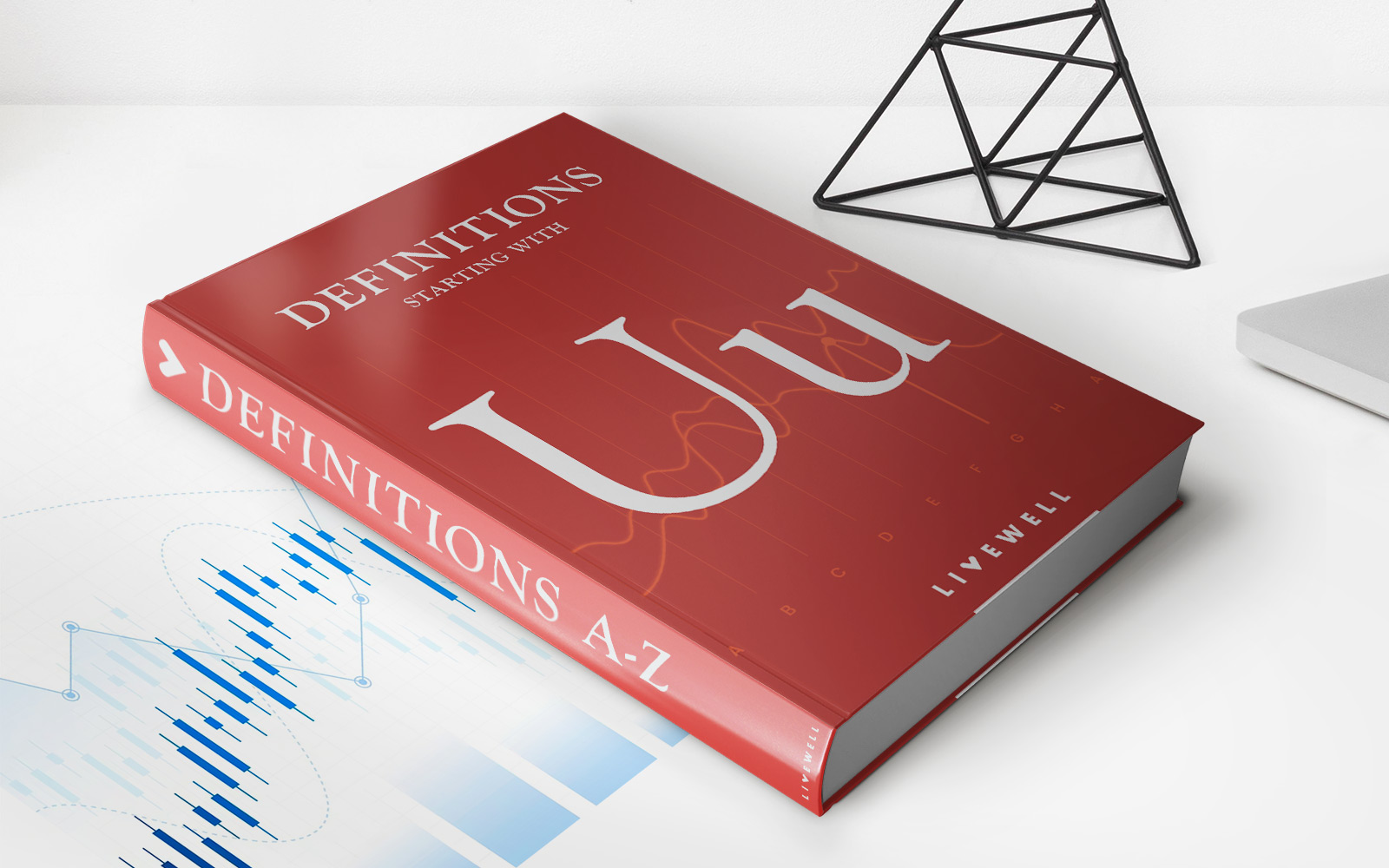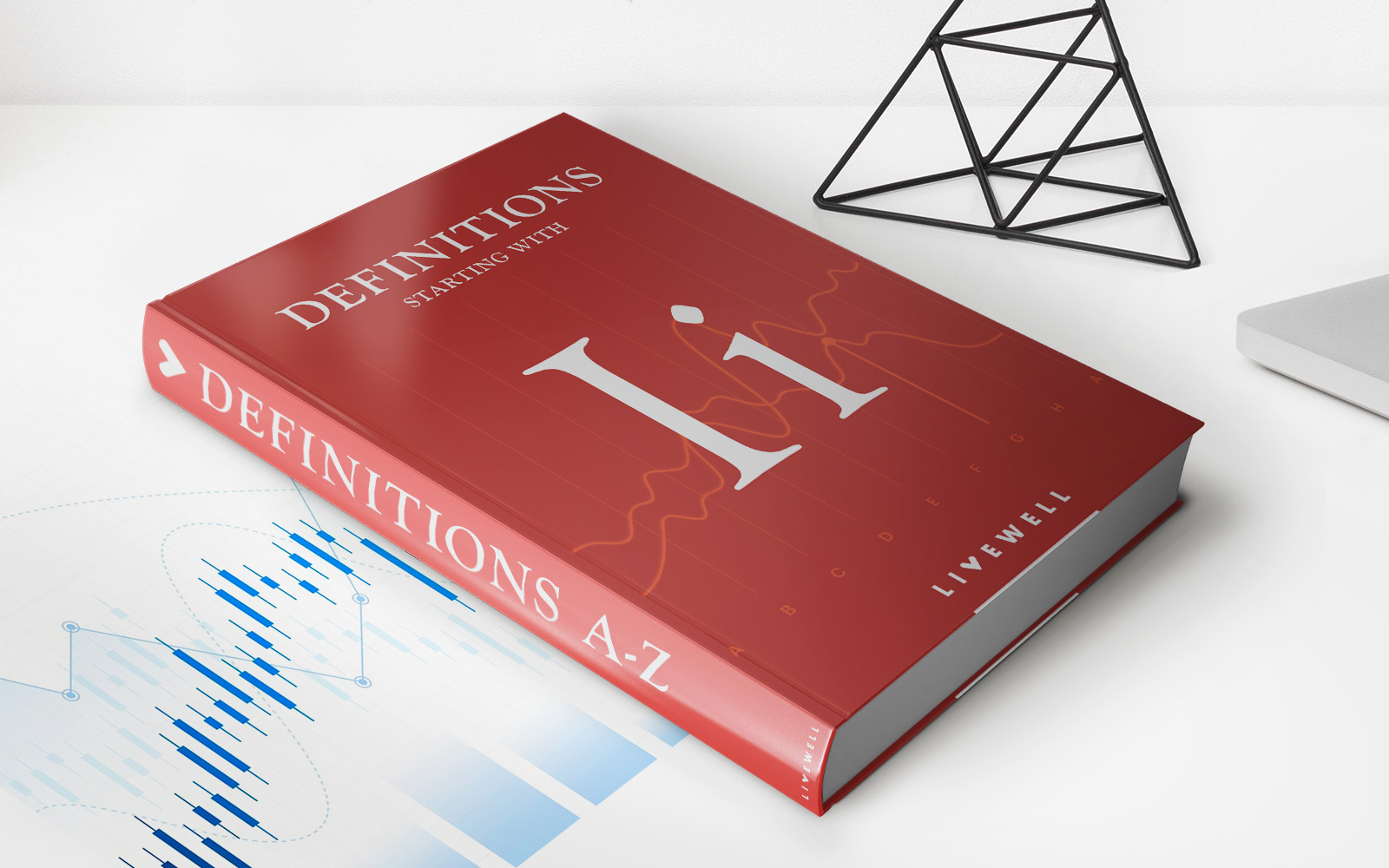

Finance
What Is Simplified Issue Life Insurance?
Published: October 16, 2023
Discover the benefits of simplified issue life insurance and how it can provide financial security for you and your loved ones. Learn more about this convenient and accessible option for securing your future.
(Many of the links in this article redirect to a specific reviewed product. Your purchase of these products through affiliate links helps to generate commission for LiveWell, at no extra cost. Learn more)
Table of Contents
- Introduction
- Definition of Simplified Issue Life Insurance
- Features of Simplified Issue Life Insurance
- Pros and Cons of Simplified Issue Life Insurance
- Application Process for Simplified Issue Life Insurance
- Comparing Simplified Issue Life Insurance to Traditional Life Insurance
- Is Simplified Issue Life Insurance Right for You?
- Conclusion
Introduction
Life insurance plays a crucial role in providing financial protection for loved ones in the event of an untimely death. However, the traditional life insurance application process can be a lengthy and complex endeavor that requires extensive medical examinations and underwriting. This is where simplified issue life insurance comes into play.
Simplified issue life insurance is a type of insurance policy designed to provide coverage without the need for a medical examination or extensive paperwork. It offers a simplified application process, making it a convenient option for individuals who may not qualify for traditional life insurance or who are looking for a faster way to secure coverage.
In this article, we will explore the ins and outs of simplified issue life insurance, including its definition, features, pros and cons, application process, and how it compares to traditional life insurance. By the end, you will have a clear understanding of whether simplified issue life insurance is the right choice for you and your family’s financial future.
Definition of Simplified Issue Life Insurance
Simplified issue life insurance is a type of life insurance policy that offers a simplified and expedited application process compared to traditional life insurance policies. Unlike traditional life insurance, which often requires a medical examination and extensive underwriting, simplified issue life insurance bypasses these requirements.
With simplified issue life insurance, applicants are not required to undergo a medical examination or provide detailed medical records. Instead, they are asked a series of health-related questions on the application form. These questions typically cover topics such as pre-existing medical conditions, lifestyle habits, and family medical history.
Based on the applicant’s responses to these questions, the insurance provider assesses the risk involved in providing coverage. The underwriting process for simplified issue life insurance is usually faster and less stringent compared to traditional life insurance.
It’s important to note that while simplified issue life insurance simplifies the application process, it does not mean that it is guaranteed or no-questions-asked coverage. The insurance provider still evaluates the applicant’s health and other risk factors based on the answers provided, but without the need for a medical examination.
Features of Simplified Issue Life Insurance
Simplified issue life insurance comes with several key features that set it apart from traditional life insurance policies. These features make it a convenient and accessible choice for individuals who may have difficulty obtaining coverage through the traditional route. Below are some of the notable features of simplified issue life insurance:
- No medical examination: One of the primary features of simplified issue life insurance is that it does not require applicants to undergo a medical examination. This means that individuals with pre-existing medical conditions or those who are unable or unwilling to undergo a medical examination can still apply for coverage. Instead, the application is primarily based on the applicant’s responses to health-related questions.
- Simplified application process: As the name suggests, simplified issue life insurance offers a streamlined application process. Applicants typically need to fill out a short application form that includes health-related questions, rather than going through the lengthy paperwork and medical tests associated with traditional life insurance applications. This makes the application process faster and more convenient.
- Quick approval: Simplified issue life insurance policies often have a faster approval process compared to traditional policies. Since there is no need for a medical examination or extensive underwriting, the insurance provider can evaluate the application and make a decision more quickly. This is particularly beneficial for individuals who need coverage urgently or want to avoid a lengthy waiting period.
- Lower coverage amounts: Simplified issue life insurance policies typically offer lower coverage amounts compared to traditional policies. While the exact coverage limits vary depending on the insurance provider, simplified issue policies are generally designed to provide more affordable options for those who need smaller coverage amounts.
- Higher premiums: Since simplified issue life insurance policies do not require a medical examination and have a simplified application process, the premiums are typically higher compared to traditional policies. This is because the insurance provider assumes a higher level of risk by offering coverage based solely on the applicant’s responses to the health-related questions.
These features make simplified issue life insurance an attractive option for individuals who may have been declined for traditional life insurance or who are seeking a quicker and more accessible way to obtain coverage without the need for a medical examination.
Pros and Cons of Simplified Issue Life Insurance
Simplified issue life insurance has its own set of advantages and disadvantages compared to traditional life insurance. Understanding the pros and cons can help you determine whether this type of coverage is the right fit for your needs. Let’s explore these pros and cons:
- Pros:
- Easy and convenient application: The simplified application process of simplified issue life insurance makes it a convenient option for those who do not want to go through the hassle of a medical examination or extensive paperwork.
- Accessible coverage: Simplified issue life insurance provides an opportunity for individuals with pre-existing medical conditions or those who may have been declined for traditional life insurance to obtain coverage.
- Quick approval and coverage: Compared to traditional life insurance, simplified issue policies offer faster approval and coverage, making it a suitable choice for those who need immediate coverage or want to avoid a long waiting period.
- No need for medical examinations: By eliminating the requirement for a medical examination, simplified issue life insurance eliminates barriers for individuals with health conditions or concerns about privacy.
- Cons:
- Higher premiums: Due to the simplified underwriting process and the higher risk involved, simplified issue life insurance policies often come with higher premiums compared to traditional policies. These higher premiums make it more expensive to maintain coverage in the long run.
- Lower coverage amounts: Simplified issue life insurance policies typically offer lower coverage amounts compared to traditional policies. This may limit the financial protection available to your loved ones in the event of your death.
- Limited policy options: Simplified issue life insurance generally offers limited policy options, which may not include add-ons or riders available with traditional policies. This limits the customization and additional benefits you can add to your coverage.
- Coverage waiting period: Some simplified issue life insurance policies may come with a waiting period before the death benefit is payable. This means that if the insured individual passes away within the waiting period, the beneficiaries may not receive the full benefit.
Considering both the pros and cons of simplified issue life insurance can help you make an informed decision about whether this type of coverage aligns with your financial goals and circumstances.
Application Process for Simplified Issue Life Insurance
The application process for simplified issue life insurance is designed to be simple and straightforward. It eliminates the need for a medical examination and streamlines the paperwork compared to traditional life insurance applications. Let’s take a closer look at the typical steps involved in applying for simplified issue life insurance:
- Gather information: Before starting the application process, gather all necessary personal and health-related information. This may include your date of birth, contact information, social security number, medical history, and lifestyle habits.
- Research insurance providers: Do some research and compare different insurance providers offering simplified issue life insurance. Consider factors such as reputation, financial stability, policy options, and customer reviews.
- Obtain quotes: Contact the insurance providers you are interested in and request quotes for simplified issue life insurance policies. Provide relevant information such as your age, desired coverage amount, and any specific requirements you may have.
- Review the policies: Carefully review the policies and policy details provided by the insurance providers. Pay attention to coverage limits, premiums, exclusions, and any waiting periods associated with the policies.
- Complete the application: Once you have chosen an insurance provider and a policy that fits your needs, you can proceed with completing the application. The application form will typically include questions about your health history, lifestyle habits, and family medical history.
- Submit the application: After filling out the application form, submit it to the insurance provider along with any required documentation or supporting materials. Make sure to provide accurate and truthful information.
- Underwriting process: The insurance provider will review your application and assess the risk involved based on the information provided. They may conduct a limited background check or consult databases to validate the information. The underwriting process for simplified issue life insurance is usually faster compared to traditional policies.
- Approval and policy issuance: If your application is approved, the insurance provider will issue the policy. Review the policy documentation carefully to ensure that it matches the terms and conditions discussed during the application process.
- Premium payment: Set up a payment method for the premiums and ensure timely payment to keep the policy active.
Keep in mind that the application process may vary slightly depending on the insurance provider and the specific policy you choose. It’s essential to read and understand the application instructions and provide accurate information to ensure a smooth and hassle-free application process.
Comparing Simplified Issue Life Insurance to Traditional Life Insurance
When considering life insurance options, it’s important to understand the differences between simplified issue life insurance and traditional life insurance. Here are some key factors to compare and contrast these two types of coverage:
- Application Process:
- Medical History:
- Coverage Amount:
- Premiums:
- Waiting Period:
- Policy Options:
Traditional life insurance typically requires a comprehensive application that includes a medical examination, extensive paperwork, and underwriting. On the other hand, simplified issue life insurance has a simplified and expedited application process that does not require a medical examination, making it a quicker and more convenient option for obtaining coverage.
Traditional life insurance puts a significant emphasis on an individual’s medical history. The underwriting process involves a thorough evaluation of medical records and test results, which can lead to higher premiums or even denial of coverage for individuals with pre-existing medical conditions. Simplified issue life insurance focuses less on medical history and relies more on the applicant’s responses to health-related questions, making it more accessible for those with health concerns.
Traditional life insurance policies often offer higher coverage amounts, making them suitable for individuals who require substantial financial protection for their loved ones. Simplified issue life insurance, on the other hand, typically offers lower coverage amounts, which can be a limitation for individuals seeking a higher level of coverage.
Due to the higher risk involved and the simplified underwriting process, simplified issue life insurance policies usually come with higher premiums compared to traditional policies. Traditional life insurance, with its extensive underwriting process, can often offer lower premium rates for individuals who are considered low-risk based on their medical history.
Traditional life insurance policies generally do not have a waiting period before the full death benefit is payable, assuming the policy is in force. However, some simplified issue life insurance policies may have a waiting period before the full benefit is payable. During the waiting period, the benefit may be limited to a percentage of the coverage amount or only refund the premiums paid.
Traditional life insurance policies offer a wide range of policy options, such as term life insurance, whole life insurance, and universal life insurance, with various add-ons and riders to customize coverage. Simplified issue life insurance policies often have fewer policy options and may not provide the same level of customization.
It’s essential to carefully consider your needs, financial situation, and health status when comparing simplified issue life insurance to traditional life insurance. Evaluate the trade-offs between convenience and accessibility versus coverage amounts and premiums to make an informed decision that best suits your individual circumstances.
Is Simplified Issue Life Insurance Right for You?
Deciding whether simplified issue life insurance is the right choice for you depends on your unique circumstances and preferences. To help you make an informed decision, consider the following factors:
- Health condition: If you have pre-existing health conditions or a history of medical issues, traditional life insurance may be more challenging to obtain or come with higher premiums. In such cases, simplified issue life insurance can be a viable option since it does not require a medical examination.
- Time constraints: If you need coverage quickly, such as to secure a loan or protect your family’s financial future, simplified issue life insurance offers a speedier application and approval process compared to traditional life insurance. This can be advantageous when time is of the essence.
- Desired coverage amount: Consider the amount of coverage you require to protect your loved ones financially in the event of your death. Traditional life insurance generally offers higher coverage amounts, while simplified issue life insurance typically provides lower coverage limits. If you need a substantial amount of coverage, traditional life insurance might be a more suitable option.
- Budget: Assess your financial situation and determine how much you can afford to pay in premiums. Simplified issue life insurance policies often come with higher premiums due to the higher risk involved. If you have a limited budget, traditional life insurance may offer more affordable premiums, especially if you qualify for lower rates based on your health history.
- Preference for convenience: If you prefer a simplified application process without the need for a medical examination or extensive paperwork, simplified issue life insurance offers the convenience you seek. On the other hand, if you are comfortable with the traditional underwriting process and are willing to go through medical examinations, traditional life insurance may offer more options and potentially lower premiums.
- Level of customization: Consider whether you require specific policy options, riders, or add-ons to tailor your coverage to your unique needs. Traditional life insurance policies typically offer a wider range of customizable options compared to simplified issue life insurance policies, which have more limited choices.
Ultimately, the decision to choose simplified issue life insurance or traditional life insurance depends on your specific circumstances, priorities, and preferences. It’s important to weigh the pros and cons of each type of coverage and carefully consider your financial goals and health situation before making a decision.
Consulting with a licensed insurance agent or financial advisor can also provide valuable insight and guidance tailored to your individual needs, helping you make the best choice for your financial future and the security of your loved ones.
Conclusion
Simplified issue life insurance offers a convenient and accessible option for individuals seeking life insurance coverage without the need for a medical examination or extensive underwriting. While it may not provide as high coverage amounts or offer as many policy options as traditional life insurance, it can be a suitable choice for those with pre-existing health conditions or time constraints.
By simplifying the application process and eliminating the need for a medical examination, simplified issue life insurance allows individuals to secure coverage quickly and easily. This can be particularly beneficial for those who require immediate financial protection or have experienced difficulty obtaining traditional life insurance due to health concerns.
However, it’s essential to consider the higher premiums associated with simplified issue life insurance, as well as the lower coverage limits and potentially limited policy options. If you have a larger need for coverage or require more flexibility in customizing your policy, traditional life insurance may be a better fit.
Ultimately, the decision between simplified issue life insurance and traditional life insurance depends on your specific circumstances and preferences. It’s crucial to carefully evaluate your health status, desired coverage amount, budget, and level of convenience to make an informed choice that aligns with your financial goals.
Consulting with an insurance professional or financial advisor can provide valuable guidance and help you navigate the options available to you. They can assess your individual needs and provide recommendations tailored to your situation, ensuring that you make the best decision for the financial security of yourself and your loved ones.














